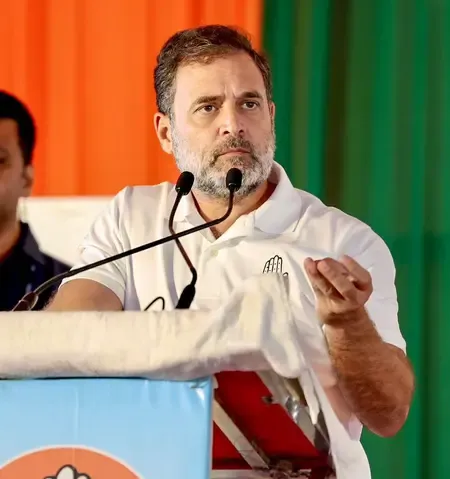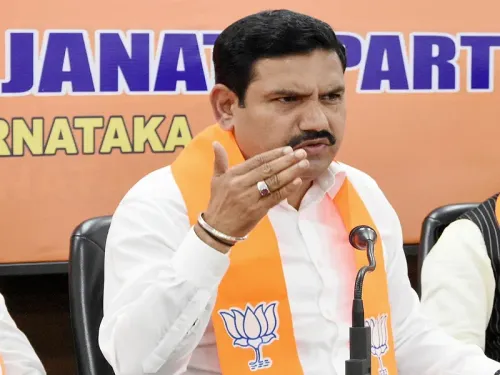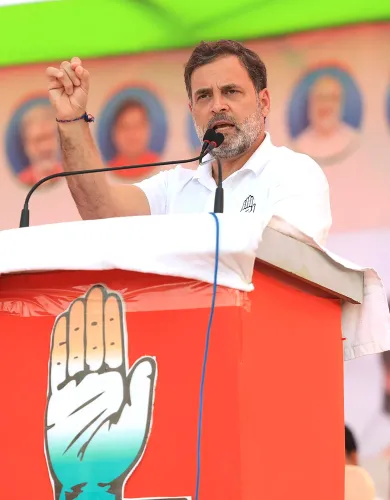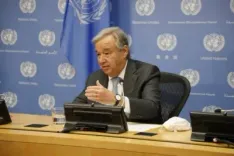How Did India's Operation Sindoor Change Modern Warfare?
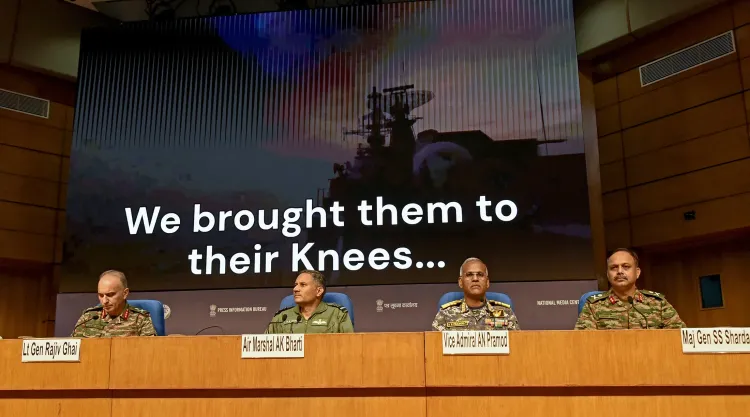
Synopsis
Key Takeaways
- Operation Sindoor signifies a strategic shift in India's military approach to terrorism.
- India's decisive response came after the Pahalgam attack, demonstrating unity and resolve.
- International analysts hailed the operation as a clear victory for India's military strategy.
- India established a new red line against cross-border terrorism.
- Military superiority was showcased with successful strikes on terrorist camps.
New Delhi, May 14 (NationPress) In the early hours of May 7, Operation Sindoor signified a pivotal evolution in India's approach towards combating terrorism. This operation was not merely another military initiative; it sent a definitive signal globally: India will no longer remain passive in response to cross-border aggression. The operation was launched just two weeks following the tragic Pahalgam terror attack on April 22, which claimed the lives of 26 innocent individuals, including a Nepali citizen. This heinous act resonated deeply across the nation, igniting widespread anger and mourning among the populace. In light of this, the Indian government swiftly and resolutely decided that the time for action had arrived.
In a meticulously executed operation, Indian forces targeted nine terrorist camps associated with Jaish-e-Mohammed, Lashkar-e-Taiba, and Hizbul Mujahideen located in Pakistan and Pakistan-occupied Kashmir (PoK). The targeted camps included Sawai Nala camp in Muzaffarabad, Syedna Bilal Camp in Muzaffarabad, Gulpur camp in Kotli, Barnala camp in Bhimber, Abbas camp in Kotli, Sarjal camp in Sialkot, Mehmoona Joya camp in Sialkot, Markaz Taiba camp in Muridke, and Markaz Subhanallah in Bahawalpur.
India's selection of targets was strategic, ensuring that the mission concentrated solely on dismantling terrorist infrastructures. The objective was straightforward: to penalize the perpetrators without escalating into a larger conflict. This operation represented a significant transformation in India's military doctrine, culminating in a rapid and decisive triumph over Pakistan.
Acclaimed analysts such as Tom Cooper, John Spencer, and Jennifer Zeng have provided insightful evaluations of India's maneuvers during this confrontation, emphasizing the strategic and tactical components that led to India's achievements.
Austrian military historian Tom Cooper described India's air campaign as a “clear-cut victory.” He highlighted Pakistan's failure to mount a credible response as a testament to the efficacy of India’s strategy. Cooper further noted that Pakistan’s deterrent strategy faltered, as threats of retaliation and nuclear escalation “failed” when India responded decisively, even escalating its actions in light of Pakistan's provocations. He observed that hostilities ceased when Islamabad reached out for a “ceasefire” after sustaining significant losses, likely influenced by a lack of effective munitions, such as attack UAVs.
John Spencer, the Chair of Urban Warfare Studies at the Modern War Institute, praised India's method as a demonstration of both strategic restraint and assertiveness. He noted that Operation Sindoor redefined India's boundaries, treating terrorist assaults from Pakistani territory as acts of war. Spencer remarked, “India struck back harder, but stopped short of general war. That is textbook deterrence: calibrated, controlled, and credible.” He characterized Operation Sindoor as a “massive victory” for India, asserting that the country achieved and “exceeded its strategic aims” within a mere four days of calculated military engagement. Spencer views this as the application of “decisive power, clearly applied,” rather than mere symbolic force.
Spencer outlines several critical strategic outcomes that highlight India's success:
- A new red line was established: Terrorist attacks originating from Pakistani territory will now be met with military action, setting a new standard.
- Demonstrated military superiority: India exhibited the capability to strike any target within Pakistan at will, including terror sites, drone coordination centers, and airbases, while Pakistan could not breach any protected areas within India. Spencer describes this as “overwhelming superiority,” which he believes is essential for genuine deterrence.
- Restored deterrence: By responding forcefully but refraining from full-scale war, India’s measured escalation conveyed a clear message of its readiness and capability to retaliate, thereby restoring deterrence.
- Asserted strategic independence: India managed the crisis autonomously, without seeking international mediation, thereby enforcing its doctrine on its own terms.
Jennifer Zeng, a member of the International Press Association, also shared a detailed account of India's precision strikes and Pakistan's resultant defeat, noting that India executed a series of accurate and impactful strikes that obliterated Pakistan's terror camps, air defense systems, and pivotal military installations. As the damage accumulated and Pakistan's attempts at retaliation were thwarted, its leadership became increasingly desperate, seeking diplomatic assistance from the United States and Saudi Arabia to avert a total military collapse.
Operation Sindoor stands as a watershed moment in India's contemporary military and strategic narrative — a campaign characterized by precision and deterrence, as well as a commitment to national sovereignty and the protection of civilian lives. What renders this operation historic is not solely the magnitude or success of the strikes, but the powerful message it conveyed: India will no longer accept cross-border terrorism as a standard practice and will respond with force that is both controlled and strategically overwhelming.
Through prompt action and calculated escalation, India successfully dismantled critical terrorist infrastructure, neutralized significant military threats, and restored a long-diminished deterrent stance — all while sidestepping a full-scale war and minimizing civilian harm.
As underscored by Tom Cooper, John Spencer, and Jennifer Zeng, the operation exemplified India's evolved defense doctrine: assertive yet responsible, surgical yet impactful.
Pakistan's inability to defend its assets or launch an effective counteroffensive, coupled with its urgent plea for a ceasefire, signifies a notable shift in regional dynamics. India not only achieved military success but also reshaped the rules of engagement.
With Operation Sindoor, India has demonstrated that strategic restraint does not equate to inaction, and when provoked, it can and will deliver a measured but overwhelming response.

